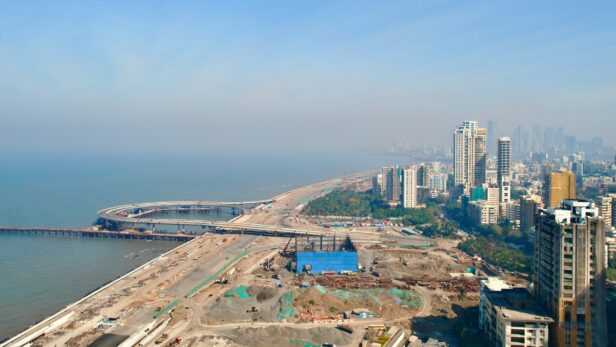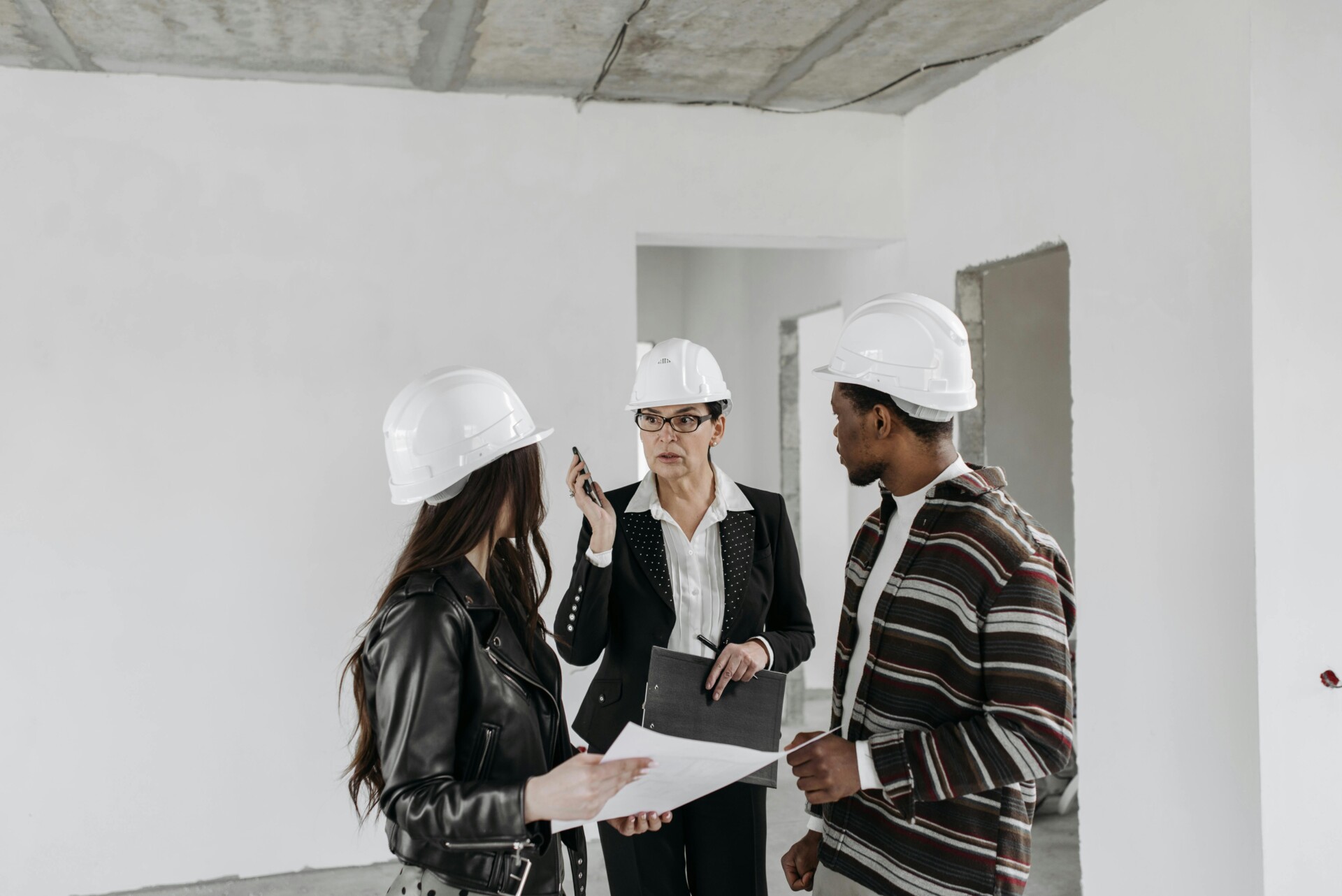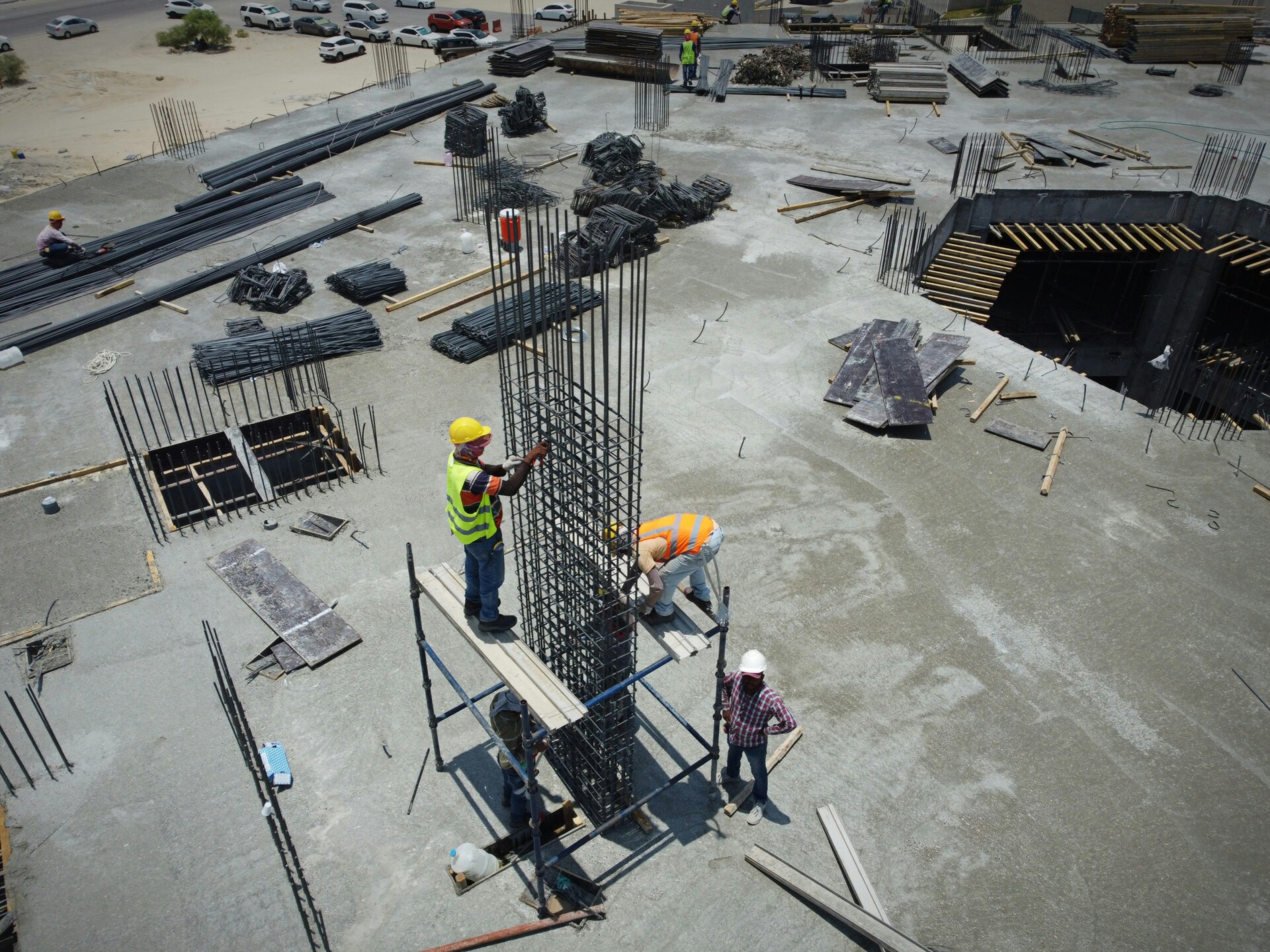Building along America’s 95,000 miles of coastline presents a paradox. These prime locations offer unmatched views and economic opportunities, yet they expose structures to some of nature’s most destructive forces. The Environmental Protection Agency projects sea levels could rise between one and eight feet by 2100, fundamentally altering the risk profile for every coastal development.
We operate in zones where salt spray corrodes materials five times faster than inland conditions, where storm surge can move entire buildings, and where erosion claims roughly $500 million in coastal property annually. FEMA designates these areas as dynamic and often hostile environments that demand specialized construction approaches. This isn’t just about weathering the next hurricane season—coastal construction requires designing for decades of changing conditions while maintaining structural integrity and code compliance throughout a building’s lifespan.
Which Site Risks And Codes Shape Coastline Construction Decisions?
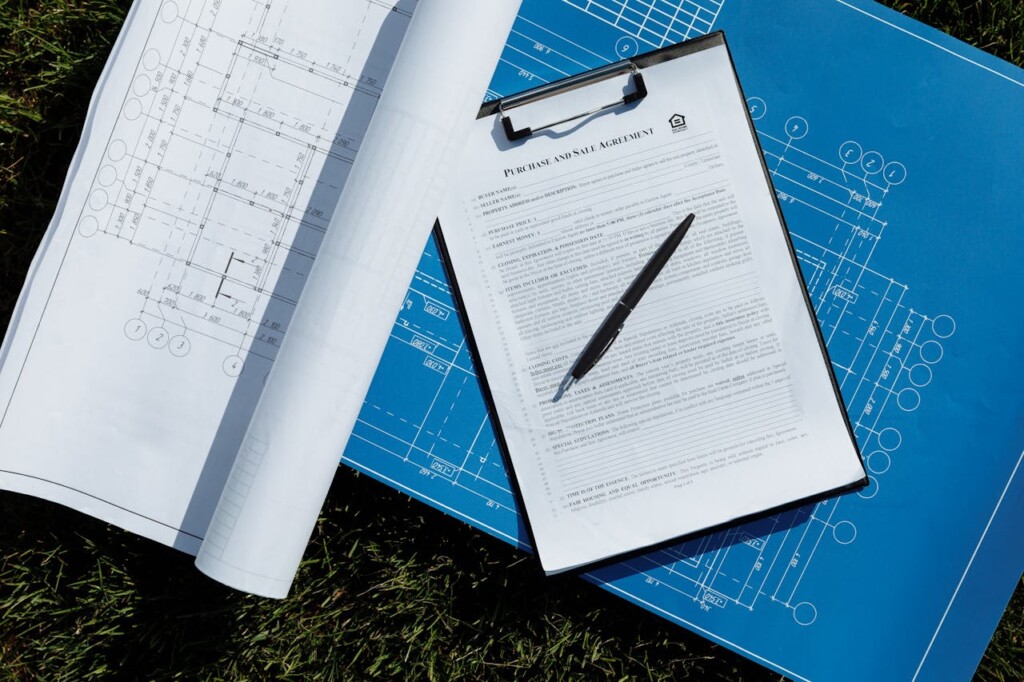
We begin every coastline construction project with thorough site analysis, examining flood zones and base flood elevation (BFE), soil conditions and scour potential, wind exposure patterns, and shoreline erosion trends. This assessment drives our design decisions and determines which regulatory requirements apply to the project.
Understanding FEMA Flood Zones
FEMA flood zones form the backbone of coastal construction requirements. FEMA’s Coastal Construction Manual identifies three primary zones that affect our construction approach:
- V Zones: Coastal areas subject to high-velocity wave action during base flood conditions
- Coastal A Zones: Areas subject to breaking waves between 1.5 and 3 feet high
- Standard A Zones: Areas subject to flooding but without significant wave action
Each zone carries specific elevation and foundation requirements that we must incorporate into our designs. V Zones present the most stringent requirements, often necessitating pile foundations and specialized breakaway construction below the BFE.
We check Flood Insurance Rate Maps (FIRMs) early in our planning process to verify the exact zone designation for each site. These maps provide the BFE, which serves as the minimum elevation reference point for construction.
Base Flood Elevation And Freeboard Requirements
The base flood elevation represents the computed elevation floodwater would reach during the base flood, which has a 1% annual chance of occurring. We elevate structures to at least the BFE, plus additional freeboard as required by the National Flood Insurance Program (NFIP) and local codes.
Freeboard requirements typically range from 1 to 3 feet above BFE, depending on local regulations and the specific flood zone. This additional elevation provides a safety margin against higher-than-predicted flood levels and wave action.
In V Zones, we must position the lowest horizontal structural member at or above the BFE plus wave height and freeboard. This requirement often results in significantly elevated structures that allow floodwaters and debris to pass underneath without causing structural damage.
Coastal Setbacks And Environmental Considerations
Coastal setback lines limit how close we can build to the shoreline, protecting structures from erosion while preserving natural coastal features. These setback requirements vary by jurisdiction but typically range from 25 to 100 feet from the mean high-water line.
We coordinate with local planning departments early to understand specific setback requirements, as violations can halt construction and require costly redesigns. Some areas use erosion-based setbacks that consider long-term shoreline retreat projections.
Environmental permits add another layer of complexity to coastal projects. NOAA emphasizes that coastal development must balance economic benefits with protection of coastal resources. We typically need permits for work near wetlands, dunes, or sensitive habitats.
Wind Exposure And Structural Requirements
Wind exposure analysis determines the design wind speeds our structures must withstand. Coastal areas face enhanced wind loads due to their exposure to hurricanes and tropical storms, with some regions requiring resistance to Category 5 wind speeds up to 180 mph.
We assess the site’s exposure category based on surrounding terrain and structures. Open coastal areas typically fall under Exposure D, the most severe category, requiring the highest design wind speeds and structural reinforcement.
These wind requirements affect every aspect of our construction, from foundation anchoring to roof attachment methods. We design continuous load paths that transfer wind forces from the roof through the structure and into the foundation system.
Soil Conditions And Scour Analysis
Coastal soils present unique challenges, often consisting of loose sand that provides limited bearing capacity and high scour potential during storm events. We conduct geotechnical investigations to determine soil properties and design appropriate foundation systems.
Scour analysis helps us understand how much soil erosion might occur around foundations during flood events. This information guides our pile depth requirements and foundation protection measures.
We also evaluate soil drainage characteristics, as poor drainage can create hydrostatic pressure against foundations and basement walls. Proper site grading and drainage systems become critical components of our coastal construction approach.
What Foundations And Elevation Strategies Work Best On The Coast?
Coastal foundation design requires balancing structural integrity against the unique forces of waves, scour, and lateral loads. We select foundation systems based on site-specific hazard levels, with pile foundations serving as the gold standard for high-risk areas. Research published in the Journal of Coastal Research demonstrates that properly engineered pile systems can withstand scour depths up to 10 feet, making them essential for areas subject to severe coastal erosion.
Pile Foundations For High-Risk Coastal Areas

Pile foundations transfer building loads deep into stable soil layers, bypassing unstable surface conditions common in coastal environments. We drive these long, slender columns through loose sand and organic materials to reach bearing capacity in dense soils or bedrock below. The elevated structure allows storm surge and waves to pass underneath without creating damaging hydrostatic pressure against the building.
FEMA guidelines specify that in V Zones, the lowest horizontal structural member must be positioned at or above the BFE plus wave height and freeboard. This elevation requirement prevents wave slam forces from striking the underside of the structure during major storm events. The National Institute of Building Sciences research confirms that every dollar invested in proper mitigation saves six dollars in future disaster costs, making pile foundations a sound economic choice for vulnerable coastal properties.
Grade Beam And Stem Wall Alternatives
Grade beam foundations work well in moderate-risk coastal areas where wave action is less severe. These systems feature reinforced concrete beams that connect and cap short pile elements, distributing building loads more evenly across the foundation system. We typically use grade beams in Coastal A Zones where wave heights range from 1.5 to 3 feet during base flood events.
Stem wall foundations serve lower-risk coastal locations where flooding occurs without significant wave action. These continuous concrete walls rest on spread footings and create an elevated crawl space beneath the structure. The interior area requires proper drainage and flood openings to equalize hydrostatic pressure during flood events. However, stem walls cannot resist the lateral forces generated by high-velocity waves, limiting their use to protected inland areas.
Elevation Methods And Requirements
We achieve proper coastal elevation through three primary methods: pile systems, engineered fill, and foundation walls with flood openings. Pile elevation remains the most reliable approach for areas subject to scour and wave action. The elevated structure on piles allows water to flow freely underneath, reducing both hydrostatic pressure and the risk of flotation during extreme events.
Engineered fill elevation involves raising the building pad with properly compacted granular materials before construction begins. This method works in areas with stable soils and minimal scour potential, but requires careful drainage design to prevent undermining during storm events. Foundation walls with flood openings combine the benefits of elevated construction with enclosed storage space, but require precise engineering to ensure the openings provide adequate pressure equalization.
The U.S. Geological Survey emphasizes that coastal foundation design must account for site-specific conditions including soil bearing capacity, scour potential, and local wave characteristics. We coordinate with geotechnical engineers and coastal specialists to ensure foundation systems can withstand both current hazards and projected future conditions including sea level rise and increased storm intensity.
Proper foundation selection requires understanding the interplay between local flood zones, soil conditions, and long-term coastal processes. We work with engineering professionals to analyze site-specific data and select foundation systems that provide both immediate safety and long-term resilience for coastal construction projects.
Which Materials And Wind-Resistant Details Increase Durability?
Materials that can withstand salt spray, high winds, and moisture form the backbone of any successful coastal construction project. We select hardware, structural components, and building envelope systems based on their proven ability to resist corrosion and extreme loading conditions. Smart material choices combined with effective connections create a robust defense against coastal hazards.
Corrosion-Resistant Hardware And Connections
Stainless steel connectors grade 316 or 304 provide the highest level of corrosion resistance in marine environments. Hot-dipped galvanized fasteners offer a cost-effective alternative for many applications. We avoid electroplated zinc coatings, which fail rapidly in salt air exposure.
Metal straps, hurricane ties, and hold-down anchors require careful selection based on exposure conditions. Marine-grade aluminum and specialized coated steel products perform well when properly specified. Regular inspection schedules help identify early signs of degradation before structural integrity is compromised.
Structural Material Selection
Pressure-treated lumber designated for marine use contains higher preservative retention levels than standard grades. Southern yellow pine and Douglas fir respond well to treatment, while naturally resistant species like redwood or cedar provide alternatives where appropriate. We specify lumber with proper end sealing and moisture content below 19% at installation.
Concrete and masonry systems excel in coastal environments when properly designed. High-performance concrete mixtures with supplementary cementitious materials resist chloride penetration. Concrete masonry units with integral water repellent reduce maintenance requirements over time.
Structural steel requires protective coatings or galvanizing in coastal applications. We specify epoxy-based systems or metallized coatings for long-term performance. Steel connections benefit from sacrificial anodes or cathodic protection in severe exposure conditions.
Building Envelope Systems
Fiber cement siding provides excellent wind and moisture resistance with minimal maintenance requirements. Quality vinyl siding systems rated for high winds offer cost-effective protection when properly installed. Coated metal panels and natural stone cladding deliver superior durability for premium applications.
Roofing material selection depends on wind exposure and local code requirements. Metal roofing systems with mechanical seams resist uplift forces effectively. Concrete and clay tiles perform well when properly attached with corrosion-resistant fasteners. High-wind rated asphalt shingles require enhanced installation methods including starter strips and increased nail patterns.
Windows and doors need impact-resistant glazing in designated wind-borne debris regions. ASCE 7-22 establishes testing requirements for these critical components. We specify products tested to ASTM E1996 standards for impact resistance and proper structural attachment.
Continuous Load Path Design
Creating uninterrupted load transfer from roof to foundation prevents progressive failure during extreme wind events. Metal connectors tie roof framing to wall systems, which connect to foundations through properly designed anchor bolts. Each connection point requires engineering review to ensure adequate capacity.
Roof uplift resistance improves dramatically with proper strap and clip installation. Hurricane straps connect rafters to top plates, while ridge beam connections prevent roof system displacement. We calculate uplift forces based on ASCE 7-22 provisions and local building codes.
Wall-to-foundation connections transfer both vertical and lateral loads. Hold-down anchors resist uplift while shear walls provide lateral resistance. Proper detailing at corners and openings maintains structural continuity throughout the building envelope.
Architectural Details For Wind Resistance
Hip roof configurations outperform gable roofs in high-wind conditions due to improved aerodynamics and structural behavior. Lower roof pitches reduce wind loads while shorter overhangs minimize uplift forces. We design roof geometry to work with local wind patterns rather than against them.
Building orientation affects wind loading significantly. Structures aligned with prevailing wind directions experience lower peak pressures. Corner details and roof edges require special attention since these areas concentrate wind forces.
Roof-to-wall transitions need careful flashing and connection details. We avoid abrupt geometry changes that create turbulence and pressure concentrations. Gradual transitions and rounded edges improve aerodynamic performance.
Some coastal areas mandate resistance to Category 5 hurricane wind speeds, requiring enhanced connection schedules and premium materials. Florida Building Code provisions establish minimum requirements, but we often exceed these standards for improved long-term performance. Insurance Institute for Business & Home Safety research demonstrates that superior construction details reduce both wind damage and insurance costs over time.
What Trends, Best Practices, And Insurance Factors Should Teams Plan For?
The coastline construction industry continues to evolve as climate risks intensify and technology advances. Teams planning new projects benefit from understanding emerging trends that improve both performance and economics, while positioning developments for long-term success in dynamic coastal environments.
Nature-Based Solutions Gain Economic Advantage
Nature-based solutions increasingly outperform traditional gray infrastructure on multiple fronts. Research from leading coastal engineering studies indicates that nature-based approaches can deliver 2 to 5 times better cost-effectiveness compared to gray-only options when lifecycle costs and co-benefits are factored in. These solutions include dune restoration, living shorelines, and engineered wetlands that provide flood protection while enhancing ecological value.
We incorporate these hybrid approaches where site conditions allow, recognizing their dual role in hazard mitigation and environmental stewardship. The key advantage lies in their self-maintaining characteristics and ability to adapt naturally to changing conditions over decades rather than requiring costly reconstruction.
Digital Modeling Transforms Design Precision
Advanced modeling technologies and digital twins have become standard tools for many coastal engineers working on complex projects. Digital twin frameworks enable real-time simulation of wave action, storm surge, and structural response under various climate scenarios, providing unprecedented accuracy in hazard assessment.
We use hydrodynamic models to refine foundation depths, optimize building orientation, and predict long-term performance under changing sea levels. This technology reduces uncertainty in design decisions and helps validate resilience strategies before construction begins. The investment in advanced modeling typically pays for itself through more efficient designs and reduced over-engineering.
Modular And Adaptive Construction Methods
Modular construction and prefabrication techniques are transforming coastal projects by reducing on-site exposure time and improving wind performance through controlled manufacturing conditions. Prefabricated components can be engineered to tighter tolerances than field-built assemblies, resulting in better sealing and structural continuity.
Adaptive foundations represent another significant trend, allowing structures to be raised incrementally as sea levels change over time. We design foundation systems with planned modification points, enabling future elevation adjustments without complete reconstruction. This approach acknowledges that coastal conditions will continue evolving and builds flexibility into the initial investment.
Integrated Quality And Maintenance Planning
Best practice now requires an integrated design approach that considers construction quality, ongoing maintenance, and lifecycle performance as interconnected elements. Strong quality assurance and quality control during construction directly affects long-term durability and insurance costs.
Maintenance planning begins during design, with accessibility for inspections and repairs built into the project from day one. We specify maintenance schedules for critical components like sealants, hardware, and drainage systems, recognizing that proactive care extends building life and maintains insurance eligibility.
Insurance Optimization Through Standards Compliance
Exceeding minimum building standards can generate substantial insurance premium reductions through various programs and rating systems. The Community Rating System offers notable savings for communities that implement flood risk reduction measures, with participating areas seeing premium discounts of 5 to 45 percent.
We document construction practices that exceed code requirements, maintain detailed records for insurance validation, and coordinate with local officials to ensure projects contribute to community-wide resilience goals. This approach positions properties for favorable insurance treatment while supporting broader risk reduction initiatives.
Conclusion And Next Steps In Coastline Construction
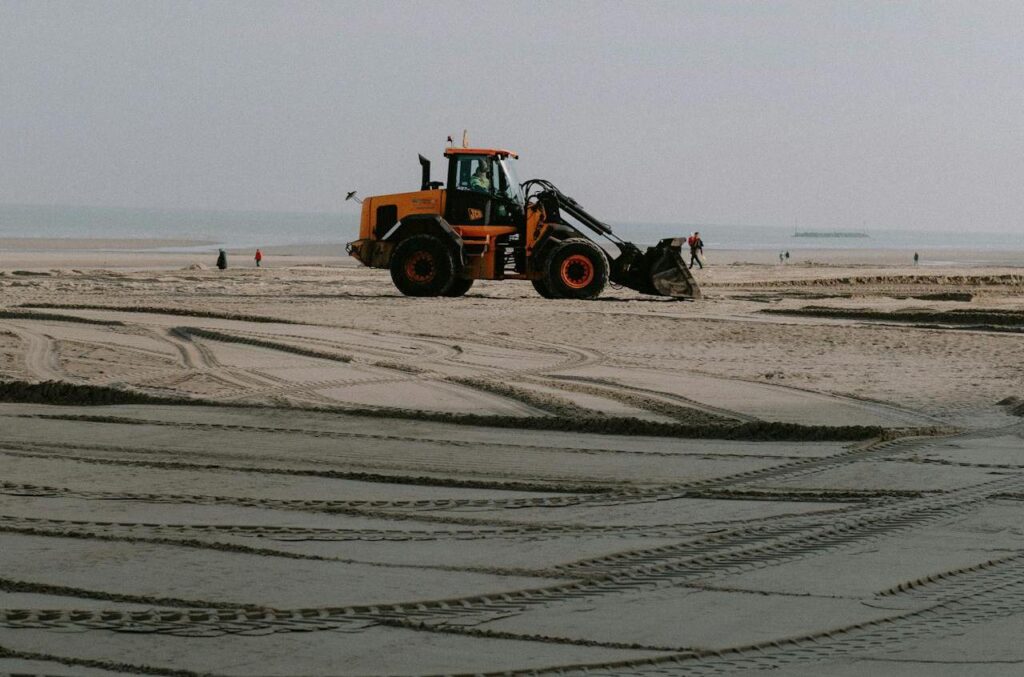
Successful coastline construction comes down to making resilient choices that protect both your investment and the people who will live or work in the structure. The key actions we have covered form a comprehensive approach: verify FEMA flood zones and base flood elevation requirements, elevate structures appropriately using pile foundations or other proven methods, and select corrosion-resistant hardware and wind-rated materials that can withstand the coastal environment. These fundamentals create the foundation for durable construction that meets both current codes and long-term performance needs.
The construction process benefits from proactive coordination with local building officials and environmental agencies to secure necessary permits early in the project timeline. We recommend developing a maintenance plan before construction begins, documenting all specialized installations for insurance purposes, and considering nature-based solutions where they align with site conditions. Working with experienced coastal contractors ensures that complex requirements like NFIP compliance, setback lines, and permit coordination are handled correctly from the start, reducing delays and ensuring proper hazard mitigation throughout the building’s operational life.
Ready to start your coastal construction project with confidence? Contact EB3 Construction to discuss your specific site requirements and resilient building strategies.

